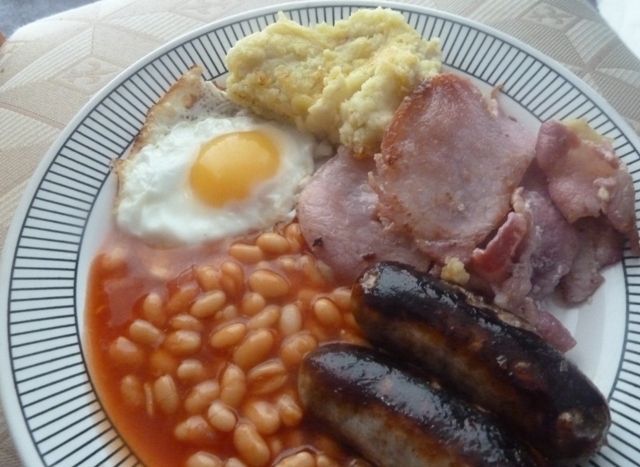Carlin Peas Recipe | The Forgotten Bonfire Night Tradition of the North East
There’s something about Bonfire Night that stirs up nostalgia. The smell of woodsmoke in the air, the sparkle of fireworks lighting up the dark, the chatter of children clutching sparklers and mittens. Every year we gather around the fire with hot dogs, toffee apples, and hot drinks, but tucked away in the North East’s history is another Bonfire Night treat that deserves a place back on the table: this traditional carlin peas recipe.
Carlin peas are a traditional North East dish of brown peas simmered and fried with butter and vinegar, simple, hearty, and steeped in centuries of history. In some areas, they’re also known as parched peas, a name still used in parts of Lancashire and Yorkshire for a similar comforting Bonfire Night dish.
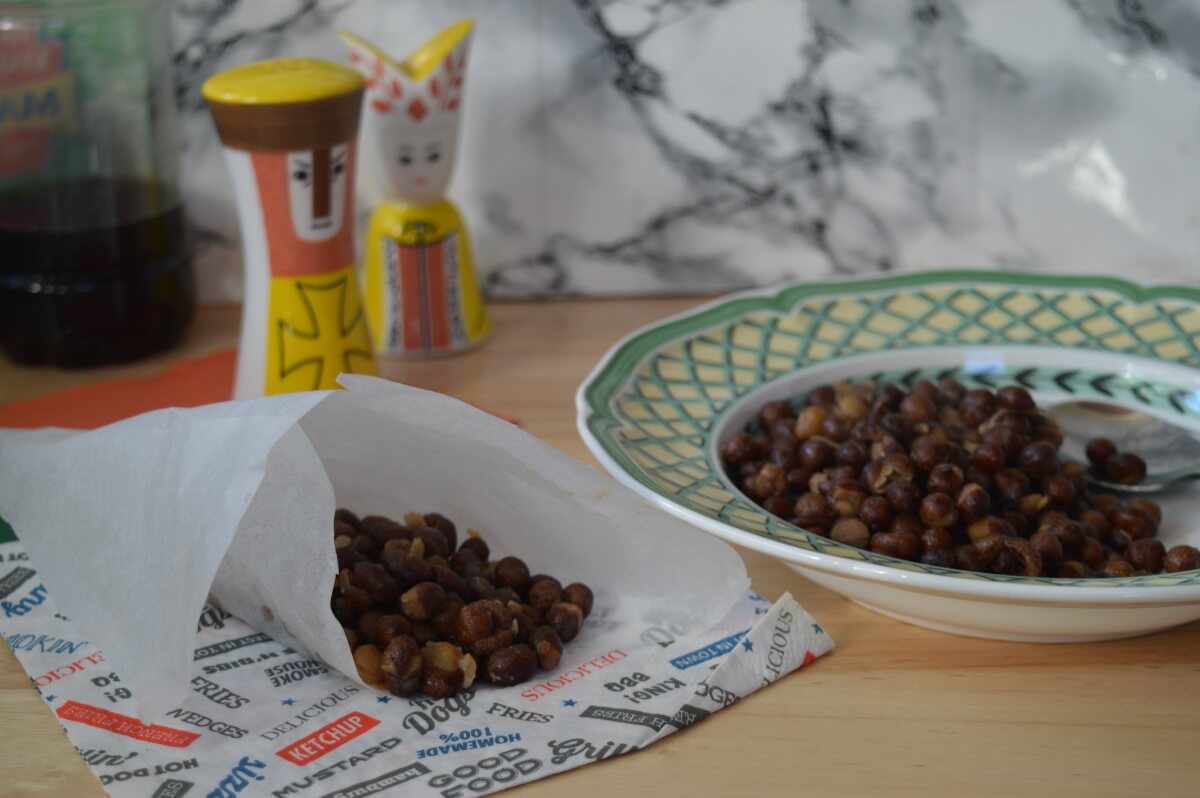
What Are Carlin Peas?
Carlin peas (sometimes called Maple Peas , Pigeon Peas, Brown Peas, or Black Badgers) are small, brownish peas with a nutty, earthy flavour. They’re a type of field pea, the sort that sustained families for generations when meat was scarce. Once cooked, they turn a deep chestnut colour and take on a texture somewhere between a lentil and a chickpea.
If you grew up in the North East, your parents or grandparents might remember eating them hot with butter and vinegar on Bonfire Night, sold from street stalls or ladled from big pots in local pubs. These days they’re rare, but they’re part of a long tradition that links back hundreds of years.
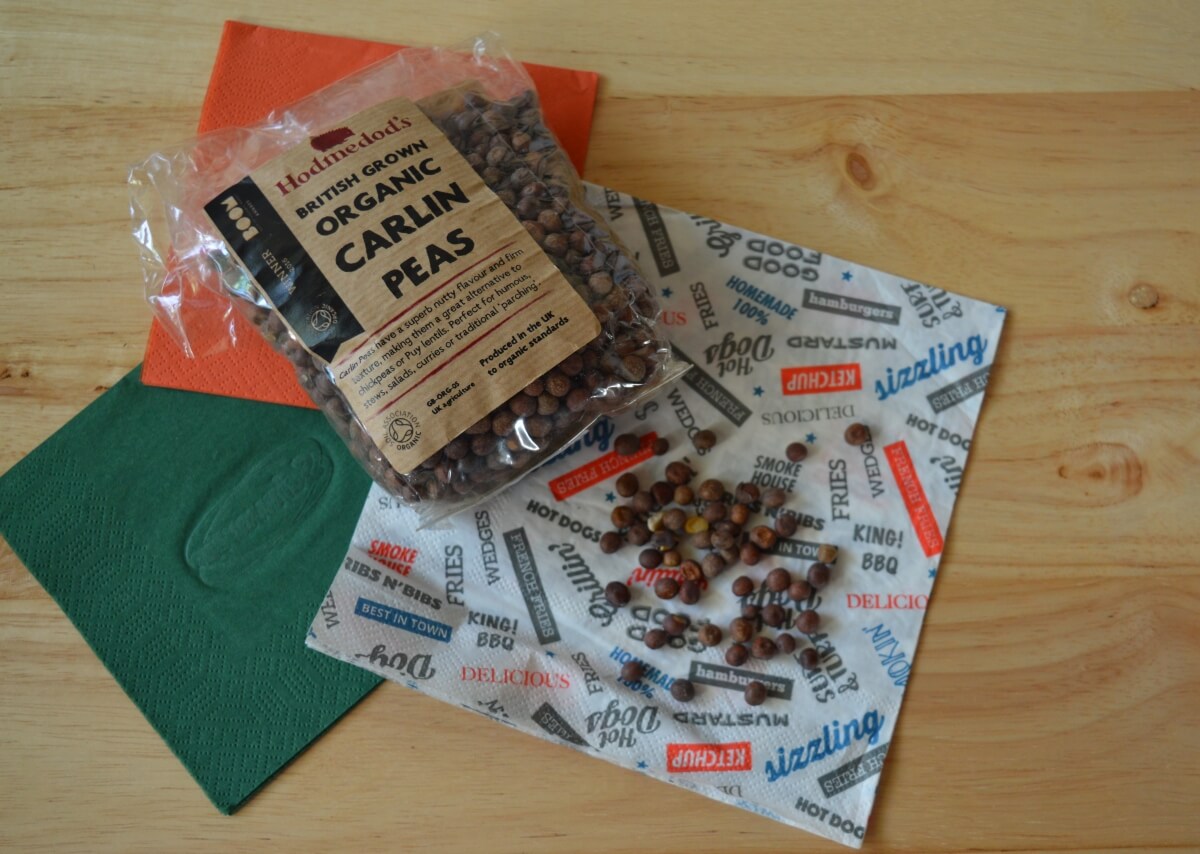
From Survival to Celebration
Like many old traditions, the story of Carlin Sunday has more than one telling. Heritage recipes often come wrapped in a little mystery, each family passing down its own version of how it began.
Some say the story starts during the siege of Newcastle in 1644, when the Royalist city was starving and surrounded by the Scots. Salvation, they say, came in the form of a shipload of peas. Depending on who you ask, the vessel belonged to the French or the Norwegians, and it somehow made it through to the Tyne with its precious cargo.
Others tell a different tale, set a little further down the coast. In this version, a ship was wrecked off South Shields, and the tide washed the peas ashore, feeding the hungry townsfolk. There’s even another story that links the tradition to Robert the Bruce’s siege of the port in 1327, when peas once again kept people alive through hardship.
However the details shift, the heart of the story remains the same: the people of the North East were saved by these humble peas. In gratitude, they ate them each year to remember that act of mercy, a ritual that became Carlin Sunday during Lent and later found its way into Bonfire Night celebrations.
Centuries later, the peas were still doing their job, keeping people warm and fed through the darkest nights of the year.
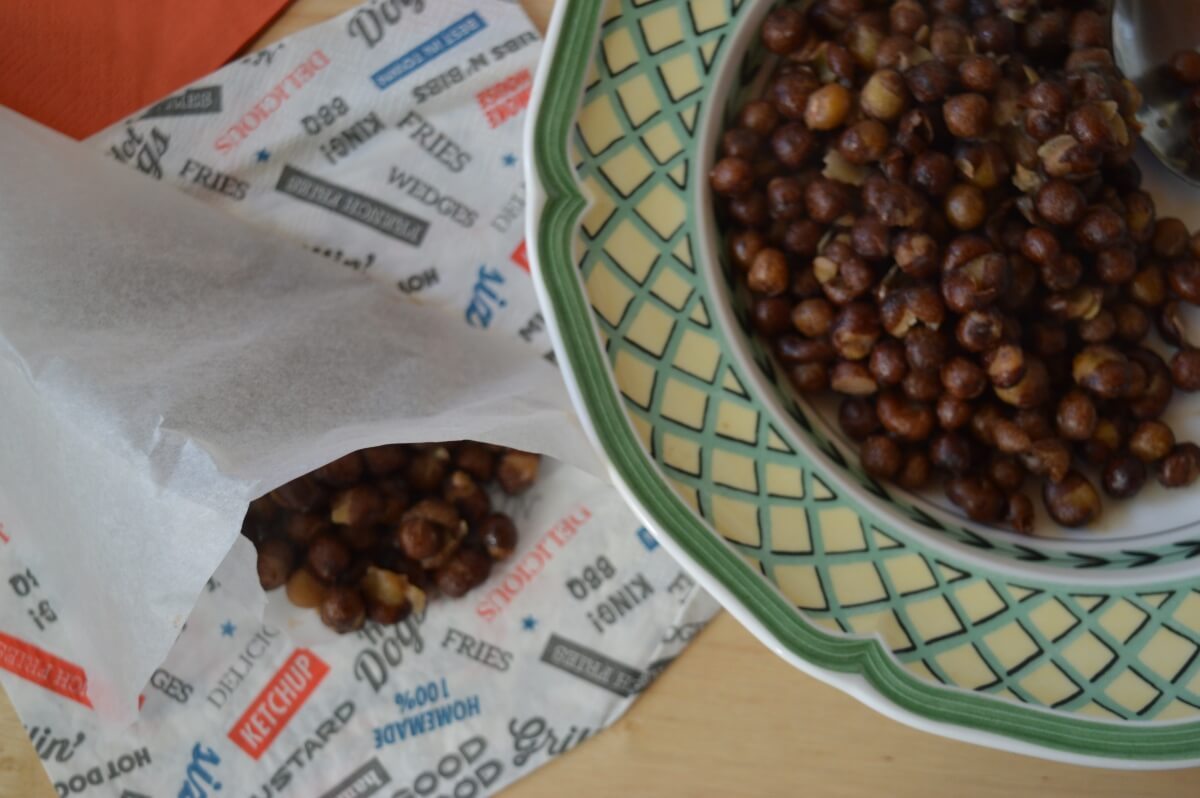
Bonfire Night in the North East
Ask anyone who grew up in the North East, and they’ll tell you that Bonfire Night here was never just about fireworks. It was about people.
Weeks before the fifth of November, kids roamed the estate collecting pallets and old fences for the bonfire, piling them high and guarding their stash like treasure. On the night itself, neighbours drifted out in thick coats, faces lit by the glow of the flames. There were no organisers or wristbands, just families, laughter, and the smell of smoke in the air.
Someone always had a big pot of soup simmering, another brought hot dogs or toffee apples, and somewhere on a small gas ring or kitchen hob, carlin peas bubbled quietly, rich, nutty, and splashed with vinegar. It wasn’t fancy, but it fed everyone.
If you were lucky, someone might pass you a bowl, still steaming, and for a moment you’d forget the cold.
That’s the part I miss: how ordinary food turned into community ritual, how every estate and village seemed to have its own version.
And maybe that’s what makes carlin peas worth remembering. They remind us that simple, shared food can still bring us together.
Then & Now
Back then, everyone shared from one big pot. These days, it might be just you and a pan on the stove, but the comfort is the same. The smell of peas, butter, and vinegar curling through the kitchen still feels like a small celebration of home.
Maybe we don’t have bonfires at the end of the street anymore, but a pot of carlin peas on a dark November evening still has the power to bring people together. Even if it is just around your own table, the warmth feels timeless.
Why Carlin Peas Deserve a Comeback
They might be humble, but they’re exactly the kind of food we need more of – sustainable, affordable, and full of flavour.
Once known as “the poor man’s meat”, they’re now a perfect example of how old traditions fit modern life: high in protein, low in waste, and comforting to cook. And the best part? They taste wonderful – nutty, buttery, and a little tangy from the vinegar.
So this year, while the fireworks crackle outside, try reviving the tradition in your own kitchen. It only takes a handful of ingredients and a bit of patience.
How to Cook Carlin Peas
Carlin peas are simple to make, just soak, simmer, and fry. They’re earthy, filling, and surprisingly satisfying.
Equipment You’ll Need
- Large bowl – to soak the peas
- Large saucepan
- Colander
- Frying pan
- Wooden spoon
Method
- Rinse and soak the dried peas overnight in plenty of cold water.
- Drain, then place in a pan and cover with fresh water. Bring to the boil, then simmer for 1–1½ hours until tender.
- Drain again and melt the butter or dripping in a frying pan.
- Add the peas and fry for two to three minutes, stirring all the time to make sure they don’t burn.
- Season well with salt and pepper, and add a splash of vinegar just before serving.

Heritage tip: Carlin peas were sometimes sweetened with sugar, treacle or rum. These sweeter versions often show up at special events or among older generations.
Carlin Peas Recipe Card

Carlin Peas (Bonfire Night Carlin Peas)
Equipment
- 1 Large bowl
- 1 Large pan
- 1 colander
- 1 Frying pan
- 1 Wooden spoon
Ingredients
- 200 g dried carlin peas (also called maple peas/black badgers)
- 1 tsp salt for the boiling water
- 30 g butter unsalted, or beef dripping
- 1-2 tbsp malt vinegar to taste
- salt and freshly ground black pepper to taste
Instructions
Soak the Peas
- Rinse the dried carlin peas, then cover with plenty of cold water and soak overnight (8-12 hours)
Simmer
- Drain the soaked peas using the colander.
- Add to a large pan with fresh water, making sure the peas are covered by 3-4 cm. Add 1 tsp salt.
- Bring to the boil, then simmer gently for 60 – 75 minutes until the peas are tender but not mushy
- Drain well.
Fry
- Melt the butter (or dripping) in a frying pan over a medium heat. Add the drained peas and fry for 3-5 minutes. Stir all the time so they don't burn
Season
- Season generously with salt and pepper. Splash over malt vinegar (start with 1 tbsp), taste, and add more if you like. For a modern twist, add Worcestershire sauce or a pinch of sugar.
- Serve
- Ladleinto warm bowls and enjoy hot.
Notes
- Sweet twist: Stir in 1-2 tsp treacle, soft brown sugar or rum before serving for a sweet-savoury note.
- Vegan option: Use 2 tbsp vegetable oil or dairy-free butter instead of butter/dripping.
- Instant Pot / pressure cooker: Cook soaked peas at High Pressure for 15 -18 minutes, natural release 10 minutes, then drain and continue with frying/seasoning.
- Make ahead & storage: Cooked peas keep 4 days in the fridge or 3 months in the freezer. Reheat in a frying pan with a touch of fat; add vinegar just before serving.
- Substitutions: If labelled maple peas or black badgers, they’re the same thing. Don’t swap with marrowfat peas, the texture and flavour differ.
- Serving ideas: Finish with caramelised onions and a drizzle of local honey; or roast on a tray at 200°C for 20 minutes for a crunchy snack.
Wholefood shops and online heritage suppliers often stock carlin/maple peas. North East markets (e.g., Grainger) may have them near Bonfire Night. How to Grow (quick guide)
Sow outdoors March–April, 5 cm deep with support; harvest when peas mature and dry. Heritage seed suppliers sometimes list carlin/maple peas. Nutrition (per serving, ~1/4 recipe; estimate)
Calories: ~225 kcal; Carbohydrates: ~30 g; Protein: ~11 g; Fat: ~7 g; Saturated Fat: ~4 g; Fibre: ~11 g; Sodium: varies with salt/vinegar.
Make It a Bonfire Night Ritual
- Light a candle while your peas simmer.
- Stir clockwise and make a wish for warmth and plenty.
- Serve in a favourite bowl, something with a bit of history.
- Tell someone the story of how these peas once fed a city.
A few small gestures can turn an old recipe into a living tradition, one that feels both comforting and new.

Grab a copy of my free Ebook
Cook Like a Geordie
Love traditional North East flavours? This free recipe book is packed with easy, time-honoured dishes that bring a taste of the region to your table—without the fuss. From hearty broths to comforting bakes, these simple recipes fit into your busy life.
Sign up now to get your copy and start cooking like a true Geordie!
How to Make Carlin Peas (Step-by-Step Photo Recipe)
1. Soak the Peas Overnight
Rinse your dried carlin peas under cold running water, then place them in a large bowl. Cover with plenty of cold water – they’ll double in size – and leave to soak overnight (8–12 hours).
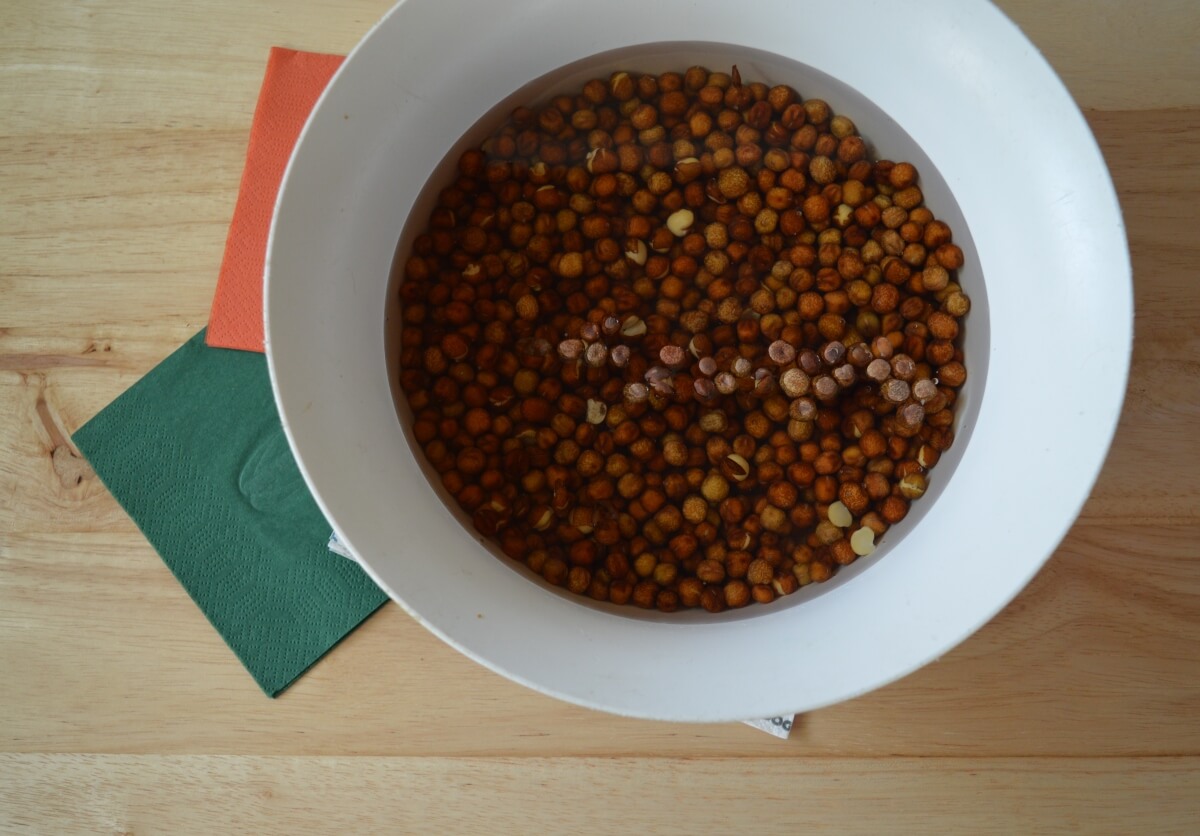
2. Simmer Until Tender
Drain and rinse the soaked peas. Tip them into a large pan, cover with fresh water and add a teaspoon of salt. Bring to the boil, then reduce the heat and simmer for about an hour until the peas are soft and creamy inside but still hold their shape.

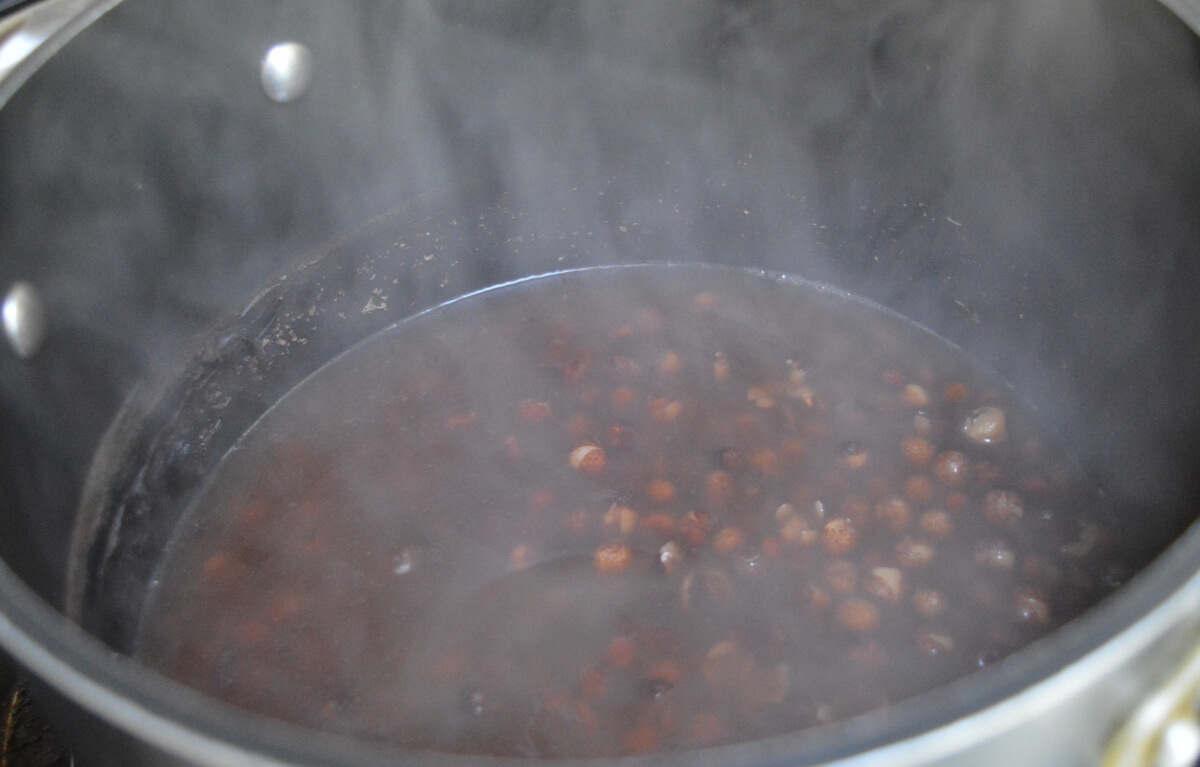
3. Drain and Prepare to Fry
Drain the peas well and let them steam dry for a few minutes.
4. Fry in Butter or Dripping
Melt a good knob of butter or beef dripping in a large frying pan or pan over medium heat. Add the peas and cook, stirring for three or four minutes.
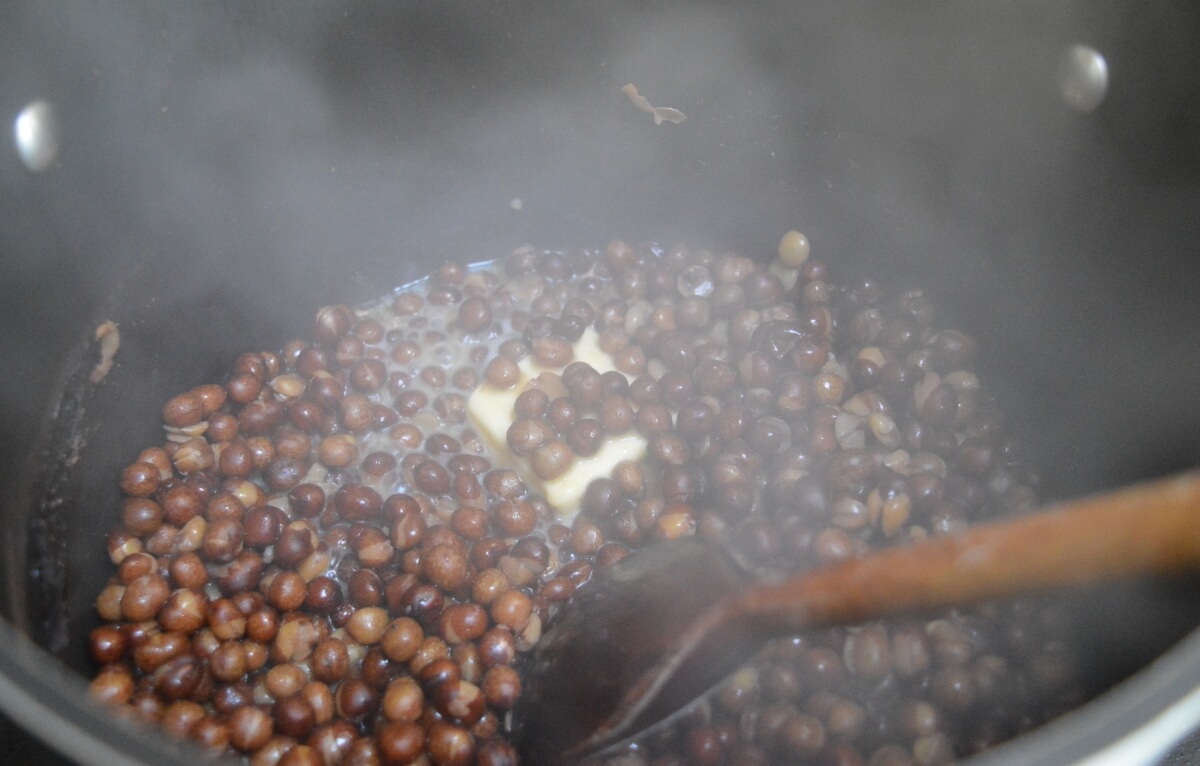
Season Generously
Sprinkle over salt and freshly ground pepper, then add a splash of malt vinegar, just enough to coat them lightly. Taste and adjust the seasoning. You can also try a dash of Worcestershire sauce or a pinch of brown sugar for a sweet and savoury balance.
6. Serve and Enjoy
Serve hot with stottie cake, pease pudding, or parkin. They’re also delicious as a snack on their own , earthy, buttery, and wonderfully nostalgic. Spoon into small bowls or cups or make paper cones to eat them the traditional way.

Optional: Roast Them for a Crunchy Snack
Toss cooked peas with a drizzle of oil, sprinkle with your favourite spices, and roast at 200°C for 20 minutes, shaking the tray halfway through. They’ll turn crisp and nutty, like a Northern twist on roasted chickpeas.
Quick Recap
- Soak overnight
- Simmer 1 hour
- Drain
- Fry in butter
- Season and splash with vinegar
- Serve hot
Where to Buy Carlin Peas
Carlin peas aren’t as common as they once were, but you can still find them if you know where to look.
- Wholefood shops and health food stores often stock them as dried peas under the name Maple Peas or Black Badgers.
- Online, try Hodmedod’s, BoldBeanCo, or other UK heritage food suppliers.
- Local markets in the North East, like Newcastle’s Grainger Market, sometimes have them in the run-up to Bonfire Night.
- Ask your local butcher or greengrocer too, some still source them seasonally.
Finding them feels like uncovering a little treasure. When you do, it’s worth stocking up; they’ll keep for months in a cool cupboard.
How to Grow Your Own
If you’re a keen gardener, you can keep this North East tradition alive by growing your own. Carlin peas are a hardy, heritage variety that thrives in our climate.
- Sow in early spring (March–April) once frost danger has passed.
- Plant 5cm deep, about 5cm apart, with pea sticks or netting for support.
- Harvest when the pods have matured and the peas have dried to that familiar mottled brown.
You can sometimes find seeds from heritage seed suppliers like King Seeds or Budget Seeds
Once upon a time, nearly every North East garden had a patch of peas. Growing your own is a lovely way to stay connected to those older rhythms – a small act of remembrance and self-sufficiency rolled into one. They also look pretty, growing to about six foot with purple and white flowers, similar to sweet peas.
How to Serve Carlin Peas Today
Traditionally eaten plain with vinegar, they also make a brilliant modern snack.
Try them:
- As a side dish with stottie cake and pease pudding on Bonfire Night.
- Seasoned and roasted like spicy chickpeas for a cosy TV snack.
- Topped with caramelised onions and a drizzle of Northumberland honey for something more indulgent.
They’re perfect washed down with a pint of local ale while the fireworks crackle outside.
November in the North East
November has its own quiet beauty here. The trees stand bare, the wind feels sharper, and the first frost dusts the garden. It is the time of year when the kitchen becomes the heart of the house.
Carlin peas belong to that moment between autumn and winter, when the nights close in and a simple bowl of something hot and savoury feels like both comfort and connection to the past.
The Magic of Tradition
Carlin peas might seem humble, but there’s something magical in their story: a food that carried people through hardship, celebrated survival, and gathered families around the fire year after year.
So, this Bonfire Night, as sparks dance in the dark sky, maybe pop a pan of carlin peas on the stove. They’re more than just peas – they’re a taste of resilience, memory, and North East warmth.
Try It Yourself
If you make carlin peas this year, I’d love to see!
Share your photos or memories in the comments below, or tag me on social media – let’s keep this North East tradition alive.
And if you enjoy recipes like this, don’t miss my Stottie Cake and Pease Pudding posts – more delicious glimpses into our regional heritage.
Frequently Asked Questions (FAQ)
Small brown field peas (also called maple peas/black badgers) with a nutty, earthy flavour, linked to North East tradition.
Local legend ties them to the 1644 Siege of Newcastle; they became a seasonal staple and street food.
Wholefood shops, heritage food suppliers online, and North East markets (especially near Bonfire Night).
Yes. Sow in early spring; they’re hardy in the UK and available from heritage seed suppliers.


